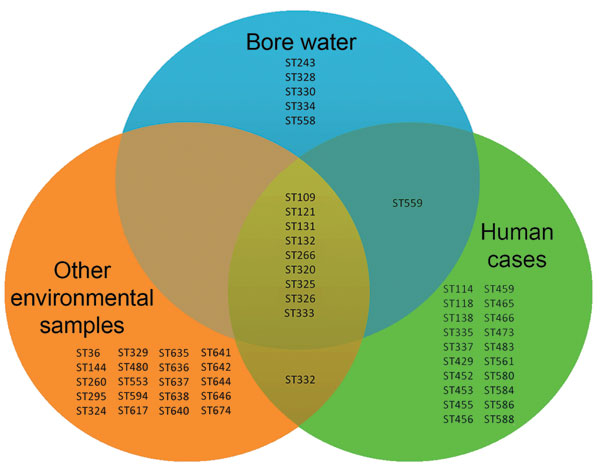Volume 17, Number 7—July 2011
Dispatch
Burkholderia pseudomallei in Unchlorinated Domestic Bore Water, Tropical Northern Australia
Figure

Figure. Venn diagram of sequence types (STs) determined by multilocus sequence typing found in Burkholderia pseudomallei strains from bore water (n = 15 STs), human cases (n = 31 STs), and other environmental samples (n = 30 STs) from the rural region of Darwin, Northern Territory, Australia.
Page created: August 15, 2011
Page updated: August 15, 2011
Page reviewed: August 15, 2011
The conclusions, findings, and opinions expressed by authors contributing to this journal do not necessarily reflect the official position of the U.S. Department of Health and Human Services, the Public Health Service, the Centers for Disease Control and Prevention, or the authors' affiliated institutions. Use of trade names is for identification only and does not imply endorsement by any of the groups named above.